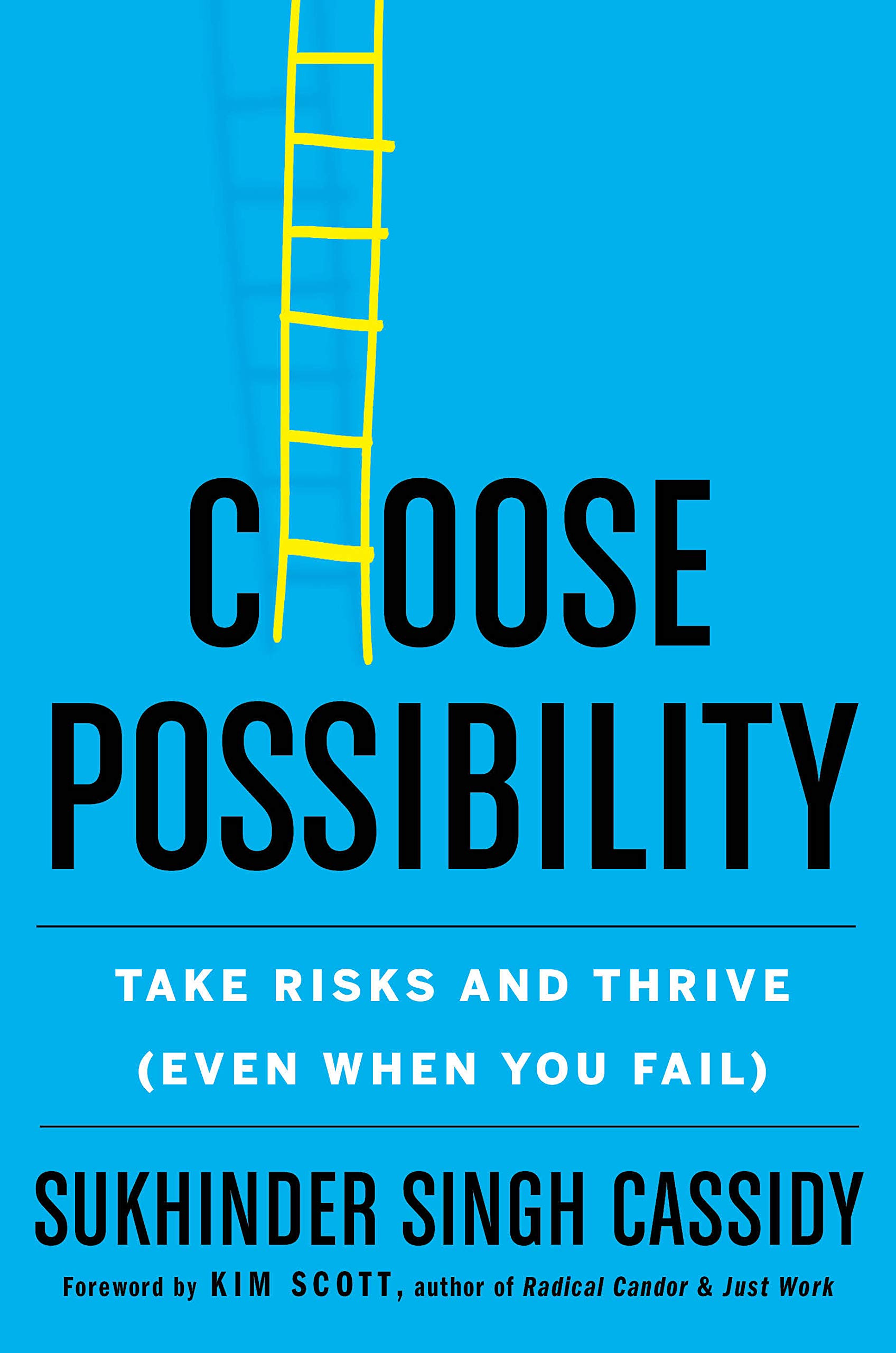As crippling as the Myth of the Single Choice might be, you can actually dispel it quite easily. The next time you watch a movie with a clear hero’s journey plotline, take a moment to chart the risks a hero takes along the way. You’ll find there are many—large and small, successful and not. Likewise, if you scrutinize the careers of successful people, you discover that success usually unfolds progressively as a result of many risks of different sizes. You also find that a person’s overall success usually arises out of multiple failures as well as wins along the way. Successful people tend to iterate their way to cumulative success through failures and achievement in equal measure.
To reach a dream is to string together a long series of choices, large and small, well advised or not. I can count at least twenty-three choices I made over a career spanning almost three decades. As you’ll see, some of these choices worked out, some didn’t, but my overall career flourished. Over time, I managed to achieve many more of my dreams than I would have with more limited risk-taking.
If you find yourself terrified of a seemingly big risk, conduct a similar analysis of your own life or career to date. You’ll likely find that your success to date didn’t come from a single big risk, but from many of them, with a much larger number of smaller risks nestled in.
As you register the complexity of your career path or those of people whom you know or admire, notice that any different number of permutations might have unlocked your or their present level of success. We tend to idealize clear, fixed “tracks” to success. If you want to become a successful corporate attorney, you must get into a top law school, then obtain a summer position at a major New York City law firm, then land a permanent job at one of these firms, then work your way up to partner.
If you want to be CEO of a big company, you obtain some initial business experience, then earn your MBA, land a job at a big company, and just keep climbing. Although such traditional “recipes” might comfort us, they also frighten us, because everything seems to ride on one or a few “big” choices you make: where you go to law school, or the job you land upon graduating, or whether or not you accept the riskier new role your current company is offering you.
A generation or two ago, these so-called key choices might have been critically important. But the good news is that, today, tracks to success don’t matter nearly as much as they used to. Millennials and Gen Zers are crafting individualized, nontraditional career paths by working “side hustles” or jumping between industries. In one study of female business leaders, an overwhelming majority—86 percent—regarded nontraditional moves as important to their success. If you’re stressed about taking a particular step on the way to your goal, don’t worry so much about it. I might have become a CEO and tech leader via my twenty-three decisions, or by an entirely different sequence.
Some CEOs rise up by following the well-worn track of “work experience, fancy MBA, killer job offer, work your way up.” But this is less and less common. Anjali Sud, called by one observer a “master of the non-linear career,” experienced a number of successes and failures en route to becoming CEO of Vimeo, despite an academic pedigree that includes degrees from Harvard Business School and Wharton. As she recounts, “I did everything from investment banking to being a toy buyer to marketing diapers online to coming to Vimeo to do marketing and finding myself in my dream job now as the CEO.” Along the way, she leveraged opportunities to create new ones. When Amazon hired her as an intern in business development, for instance, she parlayed that into an opportunity in merchandising, which in turn led to a marketing position. She counsels that people have “faith that you can affect your career path at any point,” understanding that “opportunities come from places you could never imagine. I wish I had known that. I think I would have been more chill.”
Research bears out the wisdom of a more free-flowing approach to crafting a career. As the authors of a decade-long study of CEOs note, leaders who reach the top job more quickly than others “don’t accelerate to the top by acquiring the perfect pedigree. They do it by making bold career moves over the course of their career that catapult them to the top.” These moves include taking a smaller job in order to gain new skills or experience, taking on a job for which they felt unprepared, or signing up to tackle a big, uninviting business problem. Other research, including a large LinkedIn study of hundreds of thousands of people who worked in management consulting, found that people with diverse job experiences advance more quickly than those who toil away in a single specialty or business function. As an article in the New York Times put it, “The quickest path is a winding one” when it comes to those seeking to become CEOs.
For me, the journey of risk-taking to career success unfolded across different chapters, each defined by its own broad ambitions. In every chapter, I made a series of choices to help me move toward the ambition in question, generating in turn a series of outcomes. As time passed, each new chapter also built upon the previous ones in ways that appear logical and preplanned to others now, but that were not nearly so clear as events unfolded.
Grow or Go
As long as a career risk you take results in some sort of positive impact (more on that later), it moves you forward, enhancing your skills and opening up several more potential opportunities than you could access previously. Even when a given choice results in failure, it still likely illuminates new paths to get you where you want to go. In fact, the riskiest career choice of all might be the one that seems “safest”: not moving at all. The German poet Goethe put it well when he said, “The dangers of life are infinite, and among them is safety.”
If your present situation is already deteriorating, staying put only allows it to worsen. Life might also create situations in which we have little choice but to take risks, even if we didn’t seek them out. On the other hand, if you’re coming off a success yet envisioning an even greater goal, staying put carries ever-increasing opportunity costs. As you linger in place, you fail to develop new skills and capabilities as quickly as your peers, making it increasingly harder to compete going forward. As I’ve found many times over, taking a chance, even if it fails to pan out, usually allows you to learn more quickly than remaining in a more comfortable situation that no longer challenges you.
When interviewing job candidates, I often ask them to name their biggest career regret. Curiously, most candidates point not to their failures, but to the business they didn’t start, the job opportunity they didn’t grasp, the service they hesitated to launch, the employee they failed to let go, and so on. There’s an important lesson to be learned from this.
Even on the organizational level, research shows that over the long term companies that remain relatively static are far more prone to failure than companies that make multiple choices, successful or not. In researching their book Strategy Beyond the Hockey Stick, the McKinsey partners Chris Bradley, Martin Hirt, and Sven Smit studied companies over a fifteen-year period to determine which achieved longer-term, nonlinear success. As they found, the biggest predictor of a company’s long-term success was its consistent ability to grow and evolve through moves like mergers, initiatives to improve productivity, and the like. As the authors remark, “Not moving is probably the riskiest strategy of all.” The overall lesson for companies, and indeed or all of us: You need to Grow, or you just might Go.



